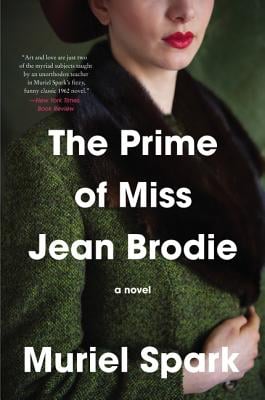APS TOGETHER
Day 1
Ch. 1, pp. 1-11
October 1, 2020 by Sarah Shun-lien Bynum
I read The Prime of Miss Jean Brodie when I was 23, before starting my first job as a seventh-grade teacher. The fact that I turned to fiction as a handbook reveals just how ill-equipped I was. I hoped to learn from exemplary models: Goodbye Mr. Chips, To Sir With Love, etc.
I was under the impression that Miss Jean Brodie belonged among the ranks of inspiring educators. Happily, I couldn’t have been more mistaken. One of the novel’s many pleasures is the unsentimental way Spark complicates the trope of the impassioned, quirky, charismatic teacher.
In a novel about six girls and their female teacher, the very first sentence begins with “the boys” as its subject. The boys are nervous, indistinct, interchangeable—there are “three Andrews among the five”—but it’s no accident that they frame our introduction to the girls.
I recognize most of Miss Brodie’s eclectic curriculum but I had to look up “Buchmanites.” They were followers of the American evangelist and religious reformer Frank Buchman. Also known as the Oxford Group, they significantly influenced the creation of AA and its 12-step program.
How swiftly Spark delineates the six girls! Epithets are helpful. Rose, famous for sex. Monica, good at math. Sandy with her little eyes. Jenny the great beauty. Eunice the gymnast. Mary the silent lump. Spark is not afraid of repetition; it serves her crispness and clarity well.
What does it mean to be “famous for sex”? For having lots of it? For being talented at it? I love that Rose doesn’t appear obviously vampy, with her hat “placed quite unobtrusively on her blonde short hair.” I also love the promise that there will be sex in the pages to come.
“There needs must be a leaven in the lump”—a saying that goes back to the Bible and feels newly relevant given our recent obsession with sourdough starters. But the yeast that spreads throughout the dough—should we interpret it as a beneficial influence, or a corrupting one?
Spark’s humor is a source of great delight and mystery for me. What is it about the comic timing of this exchange that makes me laugh out loud? “Who is the greatest Italian painter?” “Leonardo Da Vinci, Miss Brodie.” “That is incorrect. The answer is Giotto, he is my favourite.”
The novel takes place between the wars—a brief interval of peace shadowed by the losses of WWI (as embodied by Hugh, the fallen fiancé). Spark establishes time period neatly: Miss B declares, “This is 1936. The age of chivalry is past.” Direct & unfussy. Again, clarity prevails.
This chapter opens in 1936 and then flashes back to 6 years earlier, when the girls first joined Miss Brodie’s class. Conventional enough. But on the last page, the narration makes an unexpected leap forward to Mary’s death at 23. The handling of time promises to be interesting!
